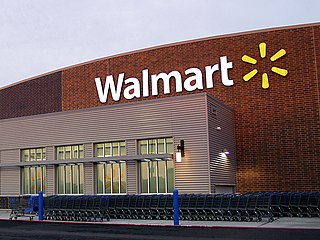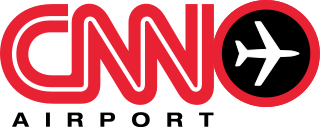Related Research Articles

A supermarket is a self-service shop offering a wide variety of food, beverages and household products, organized into sections. This kind of store is larger and has a wider selection than earlier grocery stores, but is smaller and more limited in the range of merchandise than a hypermarket or big-box market. In everyday United States usage, however, "grocery store" is often used to mean "supermarket".
An infomercial is a form of television commercial that resembles regular TV programming yet is intended to promote or sell a product, service or idea. It generally includes a toll-free telephone number or website. Most often used as a form of direct response television (DRTV), they are often program-length commercials, and are typically 28:30 or 58:30 minutes in length. Infomercials are also known as paid programming. This phenomenon started in the United States, where infomercials were typically shown overnight and early morning, outside peak prime time hours for commercial broadcasters. Some television stations chose to air infomercials as an alternative to the former practice of signing off, while other channels air infomercials 24 hours a day. Some stations also choose to air infomercials during the daytime hours, mostly on weekends, to fill in for unscheduled network or syndicated programming. By 2009, most infomercial spending in the U.S. occurred outside of the traditional overnight hours. Stations in most countries around the world have instituted similar media structures. The infomercial industry is worth over $200 billion.

HLN is an American basic cable network. Owned by CNN Worldwide, the network primarily carries true-crime programming, recently drifting away from limited live news programming.

Aldi is the common company brand name of two German multinational family-owned discount supermarket chains operating over 12,000 stores in 18 countries. The chain was founded by brothers Karl and Theo Albrecht in 1946, when they took over their mother's store in Essen. The business was split into two separate groups in 1960, that later became Aldi Nord, headquartered in Essen, and Aldi Süd, headquartered in neighbouring Mülheim.

QVC is an American free-to-air television network and a flagship shopping channel specializing in televised home shopping, owned by Qurate Retail Group. Founded in 1986 by Joseph Segel in West Chester, Pennsylvania, United States, QVC broadcasts to more than 350 million households in seven countries, including channels in the UK, Germany, Japan, and Italy, along with a joint venture in China with China National Radio called CNR Mall.

Acme Markets Inc. is a supermarket chain operating 161 stores throughout Connecticut, Delaware, Maryland, New Jersey, the Hudson Valley of New York, and Pennsylvania and, as of 1998, is a subsidiary of Albertsons, and part of its presence in the Northeast. It is headquartered in East Whiteland Township, Pennsylvania, near Malvern, a Philadelphia suburb.

CNN Airport was an American out-of-home television network owned and operated by AT&T's WarnerMedia through CNN, hence its name. The service broadcast general news, weather, stock market updates, entertainment, and travel content to airports across the United States. The founding management was led by Jon Petrovich and Scott Weiss. Deborah Cooper was the inaugural vice president/general manager.

ShopRite is an American retailers' cooperative of supermarkets with stores in six states: Connecticut, Delaware, Maryland, New Jersey, New York and Pennsylvania.
WPSG, branded Philly 57, is an independent television station in Philadelphia, Pennsylvania, United States. It is owned by the CBS News and Stations group alongside CBS outlet KYW-TV. The two stations share studios on Hamilton Street north of Center City Philadelphia; WPSG's transmitter is located in the city's Roxborough section.
WPPX-TV is a television station licensed to Wilmington, Delaware, United States, broadcasting the Ion Television network to the Philadelphia area. It is owned and operated by the Ion Media subsidiary of the E. W. Scripps Company and maintains offices on Main Street in Manayunk, with a transmitter in Roxborough, both sections of Philadelphia.

PRISM was an American regional premium cable television channel in the Philadelphia metropolitan area. Launched in September 1976, PRISM was primarily distributed through area cable systems, although it was also available through a scrambled over-the-air signal on WWSG-TV from 1983 to 1985.
SuperFresh is a supermarket brand owned by Key Food Stores which operates in New York City and its New Jersey suburbs. The company currently operates twenty supermarkets.

Self-checkouts (SCOs), also known as assisted checkouts (ACOs) or self-service checkouts, are machines that provide a mechanism for customers to complete their own transaction from a retailer without needing a traditional staffed checkout. When using SCOs, customers scan item barcodes before paying for their total shop without needing one-to-one staff assistance. Self-checkouts are used mainly in supermarkets, although they are not uncommon in department or convenience stores. Most self-checkout areas are supervised by at least one staff member, often assisting customers process transactions, correcting prices, or otherwise providing service.

The WB 100+ Station Group was a national programming service of The WB—owned by the Warner Bros. Entertainment division of Time Warner, the Tribune Company, and group founder and longtime WB network president Jamie Kellner—intended primarily for American television markets ranked #100 and above by Nielsen Media Research estimates. Operating from September 21, 1998 to September 17, 2006, The WB 100+ comprised an affiliate group that was initially made exclusively of individually branded cable television channels serving areas that lacked availability for a locally based WB broadcast affiliate and supplied a nationalized subfeed consisting of WB network and syndicated programs; in the network's waning years, the WB 100+ group began maintaining primary affiliations on full-power and low-power stations in certain markets serviced by the feed.
Genuardi's Family Markets L.P. was a chain of supermarkets located in the Northeastern United States. The store was family-owned. In 2000, it was purchased by Safeway. Its headquarters was in East Norriton Township, Pennsylvania in Montgomery County.

The Giant Company is an American regional supermarket chain that operates in Pennsylvania, Maryland, Virginia, and West Virginia under the Giant and Martin's brands. It is a subsidiary of Ahold Delhaize, and headquartered in Carlisle, Pennsylvania. As of September 2020, the company operated 190 stores, 133 pharmacies, and 105 fuel stations. The chain also provides online shopping and delivery to New Jersey through Giant Direct.
Premier Retail Networks or "PRN" is a wholly owned subsidiary of Stratacache. It programs, broadcasts and sells advertising on video screens, health kiosks and television displays inside retail locations. PRN was known as IZ-ON Media from October 1, 2012 to October 7, 2015.

Amazon Fresh is a subsidiary of the American e-commerce company Amazon in Seattle, Washington. It is a grocery retailer with physical stores and delivery services in some U.S. cities, as well as some international cities, such as Berlin, Hamburg, London, Milan, Munich, Rome, and some other locations in Singapore and India.
Triangle Publications Inc. was an American media group based first in Philadelphia, and later in Radnor, Pennsylvania. It was a privately held corporation, with the majority of its stock owned by Walter Annenberg and his sisters. Its holdings consisted of newspapers, magazines, and radio stations. After nearly two decades of divestiture, it was folded into News Corporation in 1988.

Caper is a software technology company that develops and deploys AI-powered automated checkout devices as well as AI-based software applications for retailers, grocers, convenience stores and other general merchandising store formats. Caper AI was established in 2016 by Lindon Gao, York Yang, Yilin Huang and Ahmed Beshry. It is headquartered in Manhattan, New York.
References
- 1 2 3 4 5 6 7 8 9 Clark, Kenneth R. (September 21, 1990). "CNN Launches Checkout Channel". Chicago Tribune . Retrieved July 21, 2015.
- 1 2 3 Jensen, Elizabeth (September 26, 1990). "Shoppers Check Out New TV Channel". The Philadelphia Inquirer . Archived from the original on September 21, 2015. Retrieved July 21, 2015.
- 1 2 3 4 5 6 Sloane, Martin (March 31, 1993). "'Checkout Channel' misread checkout lines". The Daily Gazette . Retrieved July 21, 2015.
- 1 2 3 4 5 Rice, Marc (February 18, 1993). "Earnings Dip as Turner Shelves Checkout Channel". Associated Press . Retrieved July 21, 2015.
- 1 2 3 4 5 6 Rice, Marc (February 20, 1992). "CNN's Checkout Channel Lets Shoppers Check Out News While Waiting In Line". Deseret News . Associated Press. Archived from the original on September 23, 2015. Retrieved July 21, 2015.
- 1 2 3 4 5 6 7 8 Fish, Larry (February 17, 1992). "Checking Out With TV News; CNN Is Looking For A Super Market Among Shoppers. Now You Can Have TV With Your Tabloids". The Philadelphia Inquirer. Archived from the original on March 4, 2016. Retrieved July 21, 2015.